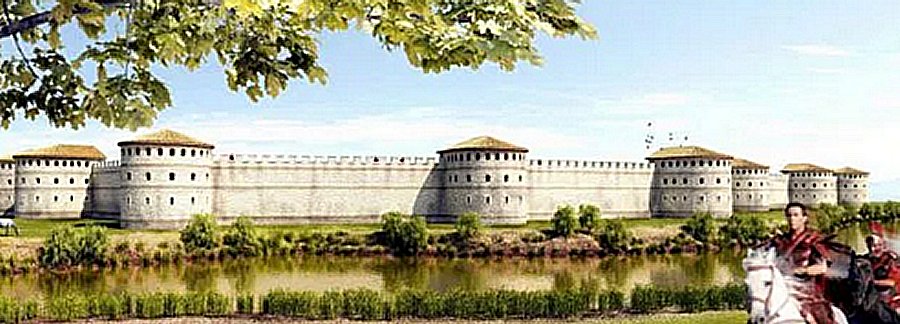A. Sutherland - AncientPages.com - Kovachevsko Kale Fortress is located in the vicinity of the town of Popovo in Northeast Bulgaria.
A few years ago, archaeologists discovered a vast ancient Roman building dated to the 4th century AD at the site of excavations of the fortress.

This ancient structure was probably a granary (Latin term "horreum"), a public warehouse used by the ancient Romans. However, in Roman times, "horreum" was also used to store many other kinds of consumables goods.
The fortress was built between 308 and 324 AD, during the joint reign of Roman Emperors Constantine I the Great (r. 306-337 AD) and Licinius, who ruled the Roman Empire during 308-324 AD.
The fortress has massive defensive walls, which have a roughly triangular plan and enclose an area of more than 40 hectares (c. 10 acres). The stone walls are fortified with 17 towers projecting in front of the wall, 13 of which were U-shaped. There are two gates, one to the west and one to the northeast.
The strong 3.20 m thick walls were constructed between 308 and 324 AD during the joint reign of Roman Emperors Constantine I the Great and Licinius after the Gothic Wars of 250-269.
Aerial photo of the late Roman Fortress "Kovachevsko Kale" and its revealed fortification system. April 2007. Image credit: Vladimir Stoykov - CC BY 1.0
Attractions of the Kovachevsko Kale Fortress include, among others, water mirrors at different levels, as well as antique fountains.
Unfortunately, the city was set on fire in the Second Gothic War of 376-382 AD, and it was slowly restored until the invasion of Attila the Hun around 447 AD. Finally, it was destroyed by the Slavs and Avars in the 580s.
The discovered building was at least 60 meters long and approximately 25 meters wide; it had two stories, a basement, and a massive two-winged door about 2.4 meters wide.
The 1.3 meters-wide walls of the structure were reinforced with outer buttresses (counterforts). The ancient Roman building technique, known as opus mixtum, was used to build the horreum. Thanks to this technique, stone, and bricks were bound together with solid mortar. Archaeologists discovered the foundations of the ancient Roman granary in the Kovachevsko Kale Fortress at a depth of over 2 meters.
The space in front of the southern entrance of the building had a portico with a colonnade of eight massive stone columns. The floor of the building and its door were tiled with square bricks of varied sizes.
The vast Roman building horreum, possibly a government-owned granary in the Kovachevsko Kale Fortress - is considered the largest among all ancient warehouses discovered in Bulgaria.
The structure was looted and set on fire around 378 AD when the Goths took and burned down the fortress during the second Gothic War (378-382 AD) of the Roman Empire.
Image credit: Hotel Map: Kovachevsko Kale - Popovo. Bulgaria
Unfortunately, the building - partly rebuilt at the end of the 4th century AD - never regained its original function as a horreum.
After the devasting invasions, the last residents left the area and never returned.
In the summer of 2013, archaeologists encountered a strange piece of architecture. It was a secret door, most probably used to remove residents outside the castle. Later, after the earthquake damaged it, it was the secret door was walled. Further investigation in the excavated area revealed yet another door, but it was in poor condition. Two hidden doors, four feet apart, were most likely used for sudden counterattacks and also provided additional protection.
Undoubtedly, Kovachevsko Kale Fortress is an important historical object that survived for about 270 years and witnessed devastating barbarian invasions by the Goths, Huns, and Avars.
The fortress represents an ancient achievement of the ancient architects and engineers who designed and built this massive fortification. They also constructed an underground aqueduct using clay pipes to supply the fortress with drinking water.
Written by A. Sutherland - AncientPages.com Senior Staff Writer
Updated on July 28, 2023
Copyright © AncientPages.com All rights reserved. This material may not be published, broadcast, rewritten or redistributed in whole or part without the express written permission of AncientPages.com
Expand for referencesReferences:
Kay A. Bulgaria
Stoykov, V. The Late Roman Fortress Kovachevsko Kale Near The Town Of Popovo
Archaeology in Bulgaria







